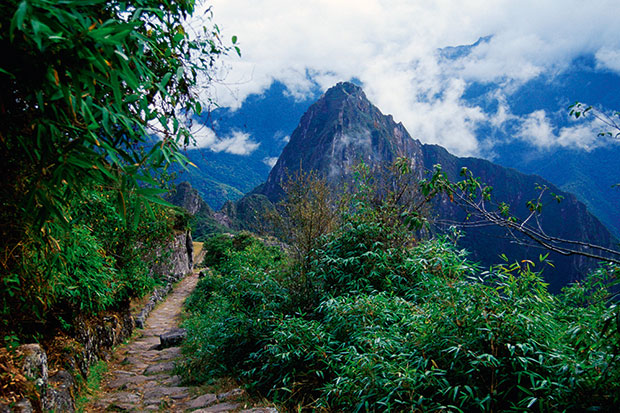You could say that this book contradicts itself. Robert Moor’s chosen topic is trails — not just walking, where you go for a bit of a stroll and might turn here or might turn there, but specifically trails, where you can only follow one route. He likes them because ‘they are a rigidly bounded experience. Every morning, the hiker’s options are reduced to two: walk or quit.’ And yet the book itself operates by exploring tangents, lots of subjects related to trails but which aren’t themselves trails.
Not that the contradiction matters; Moor goes down some pretty interesting tangents. While visiting Newfoundland to examine the oldest trails ever discovered — left 565 million years ago by tiny creatures on what was then the seabed, though we don’t know why — he examines the question of what makes us human.
Nature, as you’d expect, is a constant theme. We learn that zebras and giraffes often herd together, possibly because the former possess excellent hearing and the latter excellent long-range vision, making for a crack lion-spotting team. We read about an elephant walking carefully over two sleeping rangers in Zimbabwe: ‘Its footprint was stamped into the groundsheet between where they lay.’ And we discover that ‘desire lines’ — trails that are there simply because they form the easiest route between two points — are known in Japan as kemonomichi (‘beast trails’) and in France as chemins de l’âne (‘donkey paths’). In fact the University of Oregon once pitted 40 cows against a sophisticated computer program at finding the most efficient path across a field. The cows won.
On a smaller scale, fire ants mark the trail back from a food source by releasing a stream of pheromone — the more food there is, the more pheromone they leave. A certain species of termite mistakes the glycol compounds in the ink of ballpoint pens for its own trail substance (though for some reason it prefers blue ink to black). And there’s Charles Darwin’s account of a colleague placing two snails in a barren garden. The stronger one climbed a wall to reach the garden next door, which offered more to eat. ‘Mr Lonsdale concluded that it had deserted its sickly mate, but after an absence of 24 hours it returned, and apparently communicated the result of its successful exploration, for both then started along the same track and disappeared over the wall.’
Humans do get a look-in too. Mark Twain once went riding with friends in a snowstorm. One of the group bragged that he could get them home safely and, sure enough, found a trail. They followed it for two hours, at which point someone said: ‘Boys, these are our own tracks, and we’ve actually been circussing round and round in a circle.’ (I love this all the more because Winnie-the-Pooh did the same thing.)
In Elizabethan England it was forbidden to utter the word ‘hedgehog’ during a deer hunt (why?), and the Rauto tribe of Papua New Guinea have a name — nakalang —for a stick left to denote that a trail leads nowhere. They use the same term for death.
Moor is particularly interested in the Appalachian Trail, having walked its 2,200 miles himself. The trail was founded partly as a response to turn-of-the-century urbanisation (Manhattan housed more people in 1900 than it does now) and still attracts those in need of escape. Many adopt trail names, often in an attempt to shape
new, aspirational identities. A tense, silver-haired woman renamed herself Serenity, while a timid young man called himself Joe Kickass; sure enough, over time, she seemed to grow incrementally calmer and he more audacious.
I only had one point of serious disagreement. Moor refers to a study showing how one impatient person weaving through a crowd will slow everyone down, and confesses to being that person himself. Don’t apologise. As I’ve argued before in this magazine, pedestrians who get in other people’s way need sorting out. At the very least there should be snipers on the roof of Selfridges.






Comments